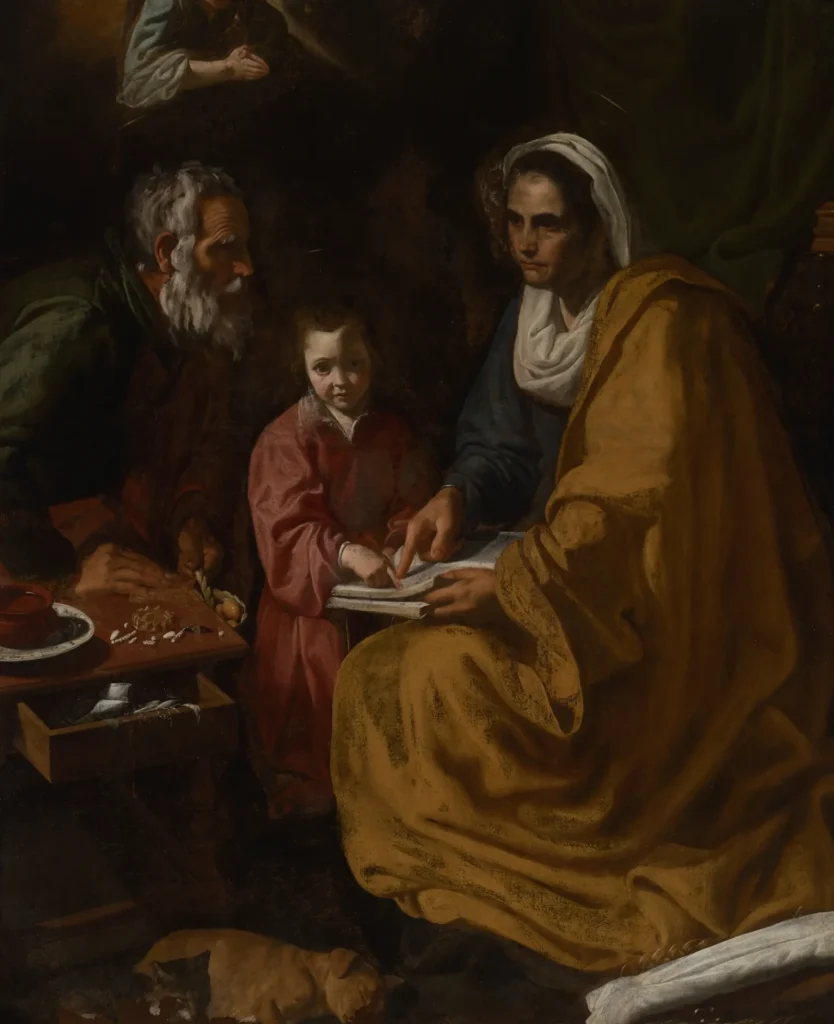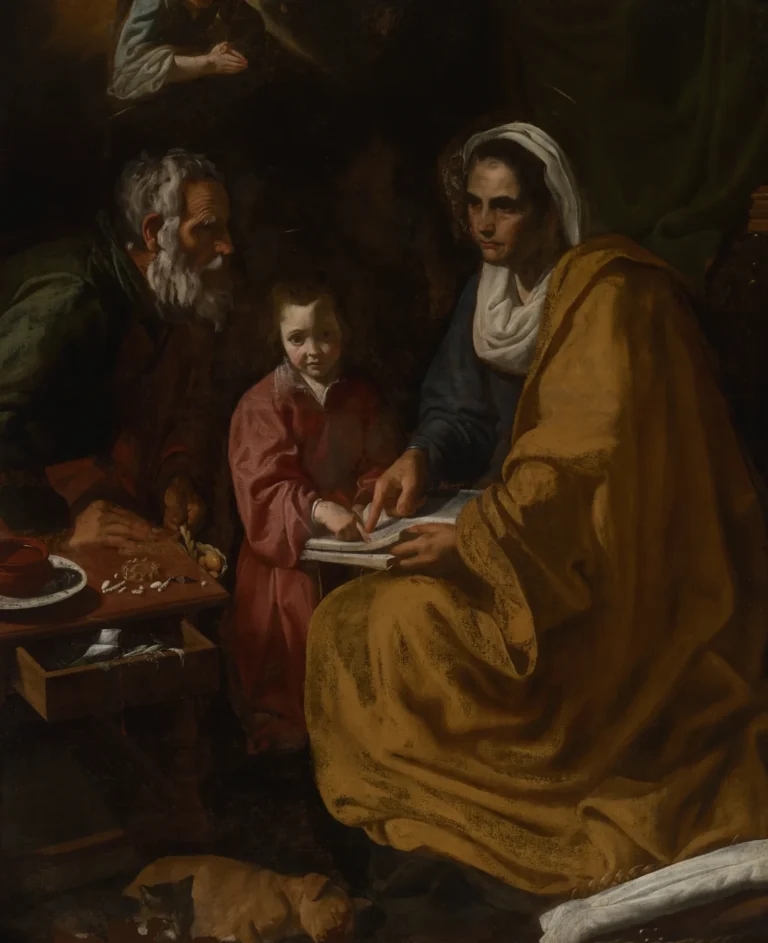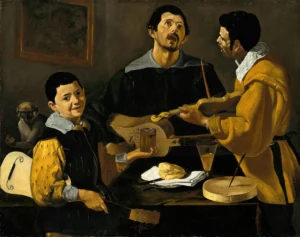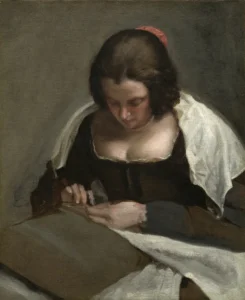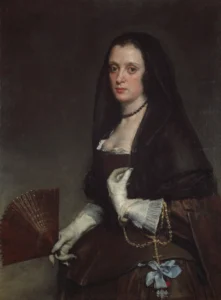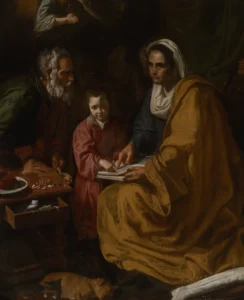The Education of the Virgin (ca. 1617–18)
The Education of the Virgin. dated to around 1617-1618, showcases the moment Saint Anne teaches the young Virgin Mary to read in a dim interior. They are accompanied by Joaquim and a divine messenger, reflecting themes of faith and spiritual nourishment. Despite its poor condition, the painting demonstrates powerful naturalism reminiscent of Velázquez's style. The ongoing debate surrounding its attribution adds to its intrigue, making it a significant artifact in both art history and restoration efforts.
1617-1618
About the Artwork
This artwork was rediscovered in 2004, hidden away in a basement at the Yale University Art Gallery, leading curator John Marciari to attribute it to Velázquez. However, this attribution sparked controversy, with many experts questioning its authenticity. Its condition was a significant challenge; the painting underwent a ten-year conservation effort that involved careful analysis of its materials and restoration of its canvas. Artistic choices reflective of Velázquez’s signature style coexist with inconsistencies that raise doubts about its authorship. Exhibited in Seville, the piece explores important themes of religious education and familial bonds while enriching the scholarly conversation about Velázquez’s oeuvre.
Did You Know
Liked what you see? Add it to your collection.
Enjoyed reading? Share it.
... continued
The painting The Education of the Virgin. dated to around 1617-1618, is a work that has been the subject of significant debate and research regarding its attribution to Diego Velázquez.
Attribution and Debate
The painting was rediscovered in the basement of the Yale University Art Gallery in 2004 by John Marciari, then a curator at the gallery. Despite its damaged condition, the painting was attributed to Velázquez, sparking both interest and controversy. This attribution is not universally accepted, with notable art historians like Jonathan Brown questioning whether it is indeed a work by Velázquez.
Condition and Restoration
The painting had been in poor condition, with many tears and abrasions, which complicated the attribution process. It underwent a ten-year conservation and research campaign, which included restoring the canvas and studying its materials. The pigments and canvas were found to be consistent with those used by Velázquez, although this does not provide definitive proof of authorship.
Artistic Style and Composition
The painting depicts the scene of Saint Anne teaching the young Virgin Mary to read in a darkened interior. It is characterized by a powerful naturalism, a hallmark of Velázquez's style. However, some passages, such as the head of the young Virgin and the drapery of Saint Anne, show inconsistencies that could suggest either the artist's youth or later overpainting by another hand.
Exhibition and Significance
The painting was exhibited in Seville, Spain, as part of an exhibition co-organized by the Institute of Culture and Arts of Seville and the Yale University Art Gallery. This exhibition provided an opportunity to study the history, technique, and iconography of the work, alongside other related paintings by Juan de Roelas and Luis Tristán.
Iconography and Symbolism
The painting features Joaquim, Anna, Mary, and a divine messenger. The scene emphasizes the transmission of faith and spiritual nourishment from the parents to Mary. The colors and symbols in the painting, such as the green robe of Joaquim, the rose tunic of Mary, and the celestial colors of Saint Anne's clothing, enhance the liturgical beauty and convey themes of love, charity, and faith.




